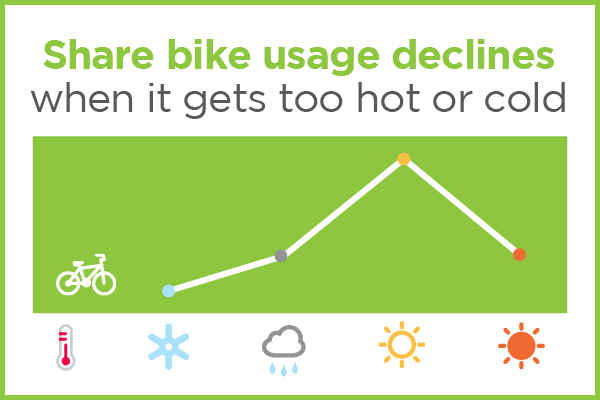Recent research about share bike use summarised in The Conversation can tell us a lot about active transport preferences, but it leads to further questions.
The research was based on data of 100 million trips taken on bike share schemes in 16 countries and 40 cities. Unlike people who own their own bikes, people who use share bikes don’t have the same pressure to cycle home if the weather turns bad, they can choose public transport or a taxi.

In Melbourne share bike riders were more likely to avoid cycling in the rain than riders in Dublin, and male riders were more likely to ride in the rain or snow than female riders. The optimum recorded temperature was 27-28C, and usage declined as the temperature dropped or increased.
Not all share bike schemes collected the gender of users, so riding preferences could only be studied in New York City and Chicago. Women’s preferences for avoiding rain and snow may reflect safety concerns, but the article does not address end of trip facilities. Professional dress standards for women can make riding more difficult where end of trip facilities are not available.
The article points to the significance of this information for traffic congestion and pollution, because people choose other modes of travel to replace bike journeys when conditions change. But high quality cycling infrastructure networks, such as those found in Seville and Valencia, can mean people are more likely to keep riding in the rain.
Bike-share schemes are unavailable to most people in NSW, but counters placed on existing bike infrastructure do reflect weather and temperature impacts. If we want to increase bike riding in NSW we will need infrastructure networks that connect journeys, more trees and shade protection for riders, and greater availability of end of trip facilities in the places people need to travel to.
Check out the Bicycle NSW resources for riding in wet weather and in high temperatures.

